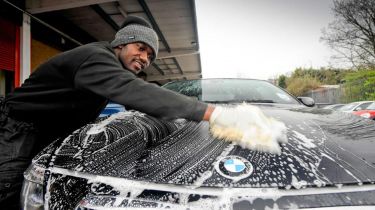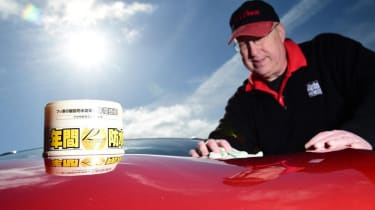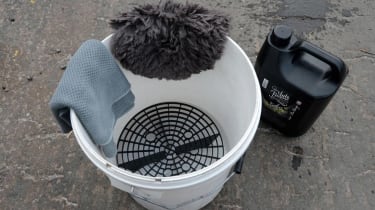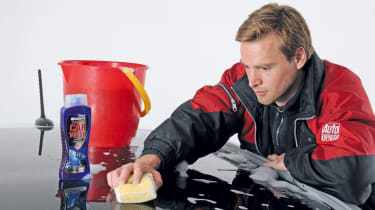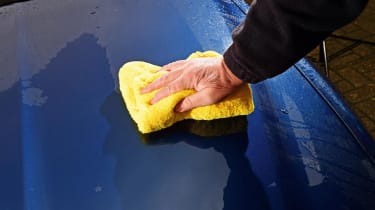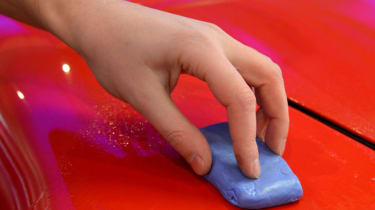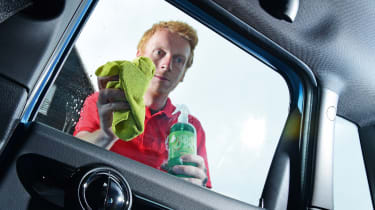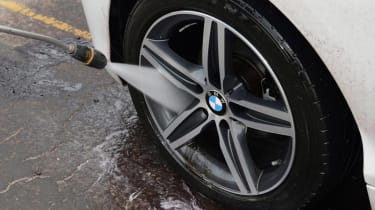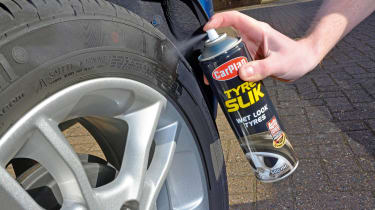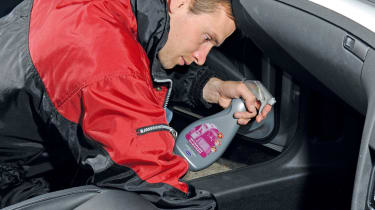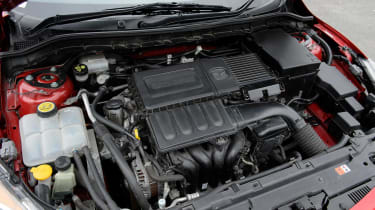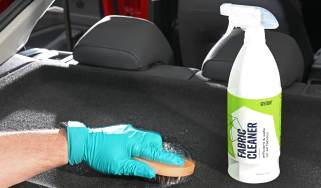How to wash your car
A step-by-step guide on the basics of how to hand wash your car and make it shine
Although it may not be the most exciting part of motoring, cleaning your car plays an important role in maintaining it, improving its resale value and simply making it look good. Depending on the kit you have available, there are many ways you can wash your car at home.
For a simple and cheap car wash you can stick to a traditional bucket, sponge and car shampoo, or you can step things up a gear by investing in a pressure washer and any number of fancy cleaning products like specialist polish and wax for a deep shine. Of course, you could pay someone else to clean your car, but we think it’s a satisfying job worth having a go at yourself if you can.
Washing your car yourself means you can take control over your car’s appearance. Once you’ve bought all the microfibre towels, soaps, lotions and potions you’ll need, it can also save you money in the long run. Cleaning your car also feels extremely rewarding once you see the result of your efforts – there’s nothing quite like watching the dirt wash away, leaving your car gleaming and spotless.
A DIY car wash can be intimidating, especially if you’ve never scrubbed it from top to bottom before. It’s easy to take some of the most basic techniques for granted and it’s not uncommon for beginners to make mistakes. You can wash your car at the wrong time of day for the best results, or even damage the car’s paint with sponges that haven’t been rinsed out correctly. There are also so many mitts, shampoos, waxes and other cleaning products and equipment on the market that it can all get quite overwhelming.
Whether you’re a beginner or experienced in car cleaning, we’ve put together our step-by-step guide on the best way to wash your car to help improve your technique and protect the paintwork’s longevity. It starts with the basics of washing, rinsing and waxing your car’s bodywork, to more in-depth tips on cleaning your car’s interior. Here’s how to wash your car…
How to wash your car in 10 easy steps
1. Choose the right weather and time of day to clean your car
The possibility of rain may seem like a risk to avoid, but cleaning your car on a cloudy day is actually much better than in direct sunlight. Washing a car in the sun might seem like the best thing to do, but the heat will dry out your car between washing and cleaning, which could leave water marks on the bodywork. The heat of the sun will also reduce the effectiveness of your cleaning products.
Of course, there's no point in washing a car in the rain (not even for a 'free' rinse after a shampoo), and if it's sunny and you must clean your car, then pick a shaded area to get to work, or choose either the early morning or late afternoon to do it. That's when the sun isn't quite as strong, and there's more natural shade to work in.
2. Cleaning
Dirt and grit needs to be washed off your car before you can get started with any cleaning. If you can park close to a water source, or have a hose long enough to reach, then we'd recommend buying a pressure washer to connect to it. These are more effective than a hose alone, because the high-pressure jet can blast more dirt off, leaving you with less work to do to get it clean. Be careful, though, as some more powerful pressure washers can damage paintwork and seals.
Two useful products are snow foam or traffic film remover. These cover your car in suds that get to work loosening off all the grime. Simply leave them to work for a few minutes, then you can blast it all off using a pressure washer. You should work from the roof of the car downwards, and don't forget to do the undersides of the door sills and bumpers - they're easy to forget when you're standing close to the car, but are an obvious place to see dirt when you're standing further away.
At the same time, you can clean the dirt that accumulates on the door sills themselves and the edges of the doors. If you're a dab hand with a pressure washer lance, you might like to try blasting it off without getting the car's interior wet. But for the rest of us, it's probably better to just use a cloth or sponge to wipe the dirt away. Remember not to use this same cloth or sponge when you shampoo your car, though, as it'll be filthy!
If you have stubborn stains, such as tar spots, dried-on bugs or tree sap, then you'll need a tougher cleaner, and oil-based products work well. There are tar and bug-removing sprays available, but even products such as WD40 can help loosen off stubborn marks. However, if you do this, it's essential that you give the affected bodywork a thorough clean and polish afterwards.
3. Shampooing
Once you've completed your initial pressure wash, you should then treat your car to a hand wash using a traditional bucket and sponge or wash mitt. NEVER use washing up liquid to clean a car - the detergents used in washing up liquid are designed to strip dirt and other products from objects to get them clean, and using washing up liquid on paintwork will strip it of any protection, causing the paint to deteriorate faster than normal.
Use a dedicated car wash shampoo, mixed with warm water, and applied using a sponge or mitt. You should have removed most dirt with the initial pressure wash, but it's worth investing in a grit guard to put in the bottom of your bucket. That way when you rinse the sponge after each wipe, any remaining dirt particles will sink to the bottom, out of harm's way. As with every other step of cleaning, it's worth approaching the car panel-by-panel, working from top to bottom to prevent dirt spreading.
4. Drying
Drying your car actually is just as important in the cleaning process as the washing stages. There's little that’s more frustrating than making your car spotless, only for it to be covered in streaks and marks from dried water droplets just a few moments later.
While microfibre cloths have been marketed as a great way to dry your car's bodywork, there is still a risk of them scratching the paintwork if they have any dirt contaminating them. We'd still go for a more traditional chamois leather, preferably a natural one rather than synthetic, making sure that it has some moisture in it before wiping it across the car.
If you're feeling particularly thorough, you could use a hairdryer to blow water droplets out of hidden areas, such as around the doorhandles and lights. These hidden droplets are notorious for ruining your hard work by running all over the bodywork as soon as you drive off.
5. Detailing
Once your bodywork is clean and dry, it’s time to move onto the next step, the detailing. A clay bar can be used over the bodywork to pick up the finest of particles, because not everything can be picked up by a chamois or cloth. Once this is done, then you can apply a polish to the bodywork if you wish to. Either way, it's waxing time after this.
The best way to apply wax is to use a fine sponge that can spread the wax evenly across the bodywork. Simply apply, allow to dry, then use a soft cloth to buff to a shine. You can purchase polishing brushes that attach to a household drill, although that carries the risk of scratching your bodywork if you're not careful.
6. Windows
With the bodywork clean, it's time to turn to the windows. While there are dedicated automotive glass cleaners available, a domestic glass cleaner should perform just as well - as long as it's vinegar-based for a streak-free finish. When you're cleaning, do the inside and outside of the windows, and lower them slightly to clean the strip where the window and seal meet. A lint-free cloth is best for this step.
While you've got the glass cleaner out, it is well worth giving your mirrors a good clean, too. Once you're done, applying a rain repellent liquid or an anti-fog coating could help to improve visibility and safety if you find yourself driving through more adverse or colder weather conditions in the days or weeks after you have cleaned your car.
7. Wheels
One part of any car that's prone to dirt is the wheels. Brake dust can cling to alloy wheels easily, and it can quickly build up, leaving the wheels looking filthy when the rest of the car is clean. You can use snowfoam on the wheels and tyres at the same time as you're cleaning the bodywork, but for baked-on brake dust, a dedicated alloy wheel cleaner is needed. Some are sprayed on and change colour to show exactly where the dirt is coming off, and a blast with a pressure washer can help them look spotless quickly.
Once cleaned, you can wax wheels to help prevent brake dust from collecting on them in the first place, while a good tyre shine can help your rubber look factory-fresh.
8. Exterior trim
Most modern cars now come with colour-coded bumpers, doorhandles and wing mirrors. But if you have an older car or 4x4, there's likely to be black plastic on display. Most tyre shines can also be used on these bits of plastic trim, but dedicated ‘trim restorer’ products are also available. Both should offer added protection from fading via ultraviolet rays from the sun.
For even older cars, you will need a chrome trim cleaner. There are plenty of metal polishes that are perfect to use on exterior brightwork, while a coat of wax after cleaning will also help to prevent fading or discolouring.
9. Interior
With your car clean outside, it's time for the interior to get clean, too. You really need a decent cordless vacuum cleaner with a set of good attachments to get into all the nooks and crannies of a car's cabin. The latest domestic handheld vacs are powerful enough to suck up the worst dirt, and have the battery power to help you vac your car in no time at all.
It's worth sliding seats back and forth to suck up the worst dirt from underneath them, while flipping and folding back seats - and opening the rearmost row in seven-seaters - can reveal hidden debris, too.
Don't forget the boot. If you can remove the boot floor, then it might be quicker and easier to take it out, put it on the ground and run the hoover over it. Then you can also go around the spare wheel well.
If you've got crevice tools for your vac, then use them. The narrower, the better, as some gaps between seats and transmission tunnels can be ultra-narrow. A brush attachment can be good for lifting dust from plastics, especially the top of the dashboard and in between the air vents.
Once this is done, it's time to crack open the wipes. Dashboard wipes can leave a matt or gloss finish, depending on what you prefer, and are really good for wiping up crumbs or spillages in cupholders and door bins. There are also specialist cleaners available for fabric or leather seat upholstery, so you really can go to town.
10. Under the bonnet
If you're going the whole hog, then you might as well get in the engine bay and give that some TLC, too. One bonus of this is that if a garage sees your well maintained engine bay, they may well give your car the same care and attention. It's ill-advised to use a pressure washer under here, because of the damage you could do to electrical parts or greased components.
Use a silicone-based spray to revive hoses and rubber coated cables, while a bit of grease on components that need it can add another finishing touch.
Once you've cleaned your car, it's time to enjoy it! A clean car can make you a more careful driver - after all, if you've invested a day cleaning it and making it look smart, you don't want it to go to waste.
Want to make sure you have the best cleaning products at your disposal? Check out our comprehensive car product group tests.
Find a car with the experts
